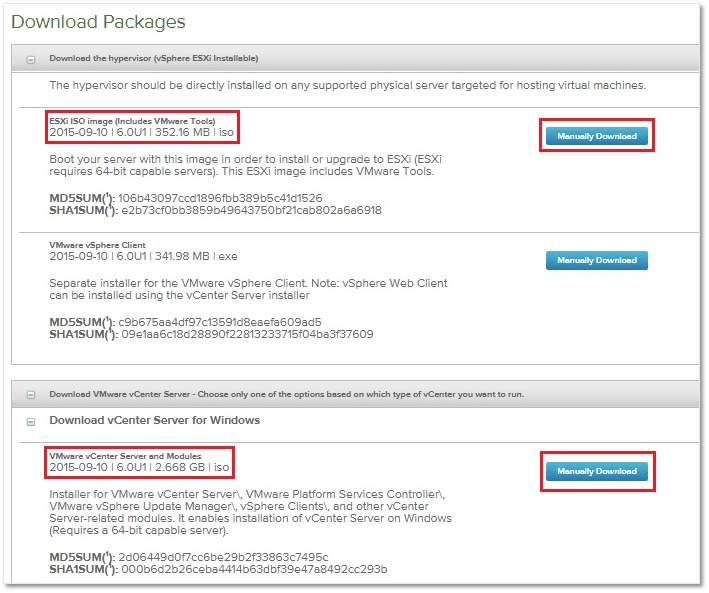

I select only: OpenSSH server because I prefer to manage the installation of the other packages after the server is up and running. Now select the packages you want to install. Leave this blank (for most installations) and select: Continue Select: Guided – use entire disk and set up LVMĪccept the default, which represents the entire disk Provide a “Full name” for the administrator
#Vmware esxi 6.0 download iso how to#
You must restart the VM internally, as opposed to causing a reset, which would disconnect the VM from the ISO ESXi Free How to patch ESXi without an access to the VMware-ESXi-6.0.0-2494585-depot.zip file The steps: Step 0 : Connect to your ESXi with vSphere client and if necessary, enable SSH by going to configuration > security profile > properties > ssh and start the SSH service. Download Packages Your downloads are available below VMware vSphere Hypervisor 6.5.0a - Binaries VMware vSphere Hypervisor 6.0 Update 2 - Binaries VMware vSphere Hypervisor 6.0 Update 1 - Binaries VMware vSphere Hypervisor 6. Now: Send Ctrl+Alt+Del to cause the VM to restart. Once the VM is powered on, then you can click the CD/DVD Icon (at the top of the console window) and choose: Connect to an ISO on local diskĬhoose to the ISO you downloaded from Ubuntu Power the VM on by clicking the green arrow. Right click on the VM and choose: Open Console Installing Ubuntu as the Operating System I choose Thin Provision because I intend to make this VM into a Virtual Appliance I prefer VMware Paravirtual (which is compatible with Ubuntu), but choose LSI Logic Parallel because I intend to make this into a cross-platform Virtual Appliance after I am complete. VMXNET 3 is a VMware paravirtual networking adapter that is compatible with recent Ubuntu Releases,Ĭhoose the SCSI Controller for the VM. The reason you can choose sockets and/or cores per virtual socket relates to cost of licensing for certain products, not COMPUTE resources!Ĭhoose the network the VM will be assigned to. An interesting property of this dialog is that the “Total Number of Cores” (vCPU’s) is the only number that matters as far as the CPU resources assigned to this VM. Select: Linux and then choose Ubuntu Linux (64-bit) After selecting the ESX/ESXi version, It will allow us to select the Operating system to download VMware tools ISO image version for the respective operating. Y ou can select the version of vSphere to download the VMware tools. I recommend going no higher than Virtual Machine Version 8, at least until VMware figures out the client mess it has gotten itself into! Manually Download VMware Tools ISO Image. Open the vSphere Client, connected to your ESXi Host, then right-click and choose: New Virtual MachineĬhoose the Virtual Machine Hardware Version. Download the ISOįirst, download the Ubuntu Server ISO from: Today I am going to show you how to build Ubuntu Server 14.04.3 LTS as a Virtual Machine running on VMware vSphere ESXi using the VIrtual Machine Remote Console ( VMRC) and ISO Image on local disk. Ubuntu is one of the most well-known and useful server Operating Systems available.

John Borhek How to guides, Linux, Operating Systems, Ubuntu, VMware vSphere October 6, 2015


 0 kommentar(er)
0 kommentar(er)
